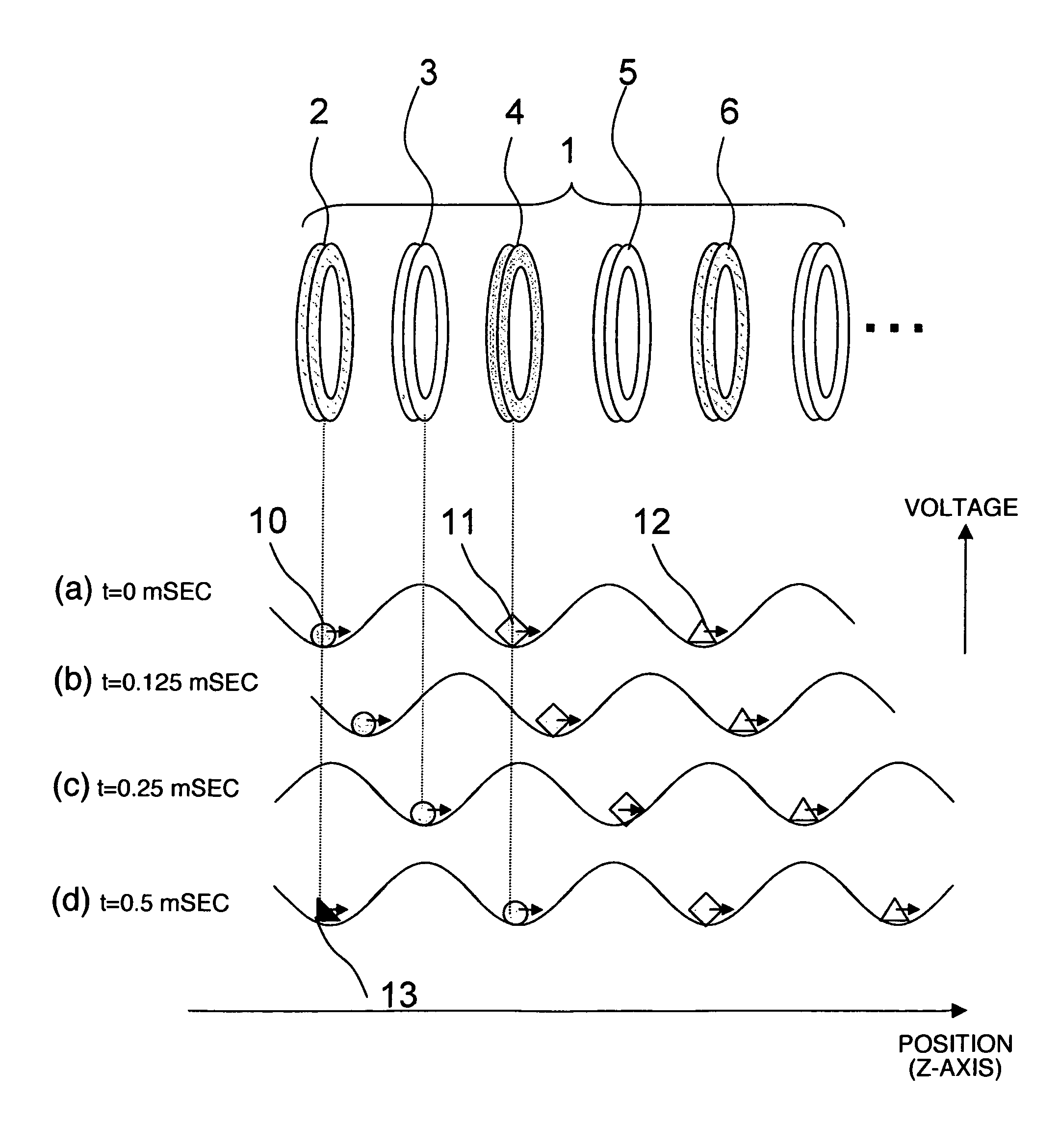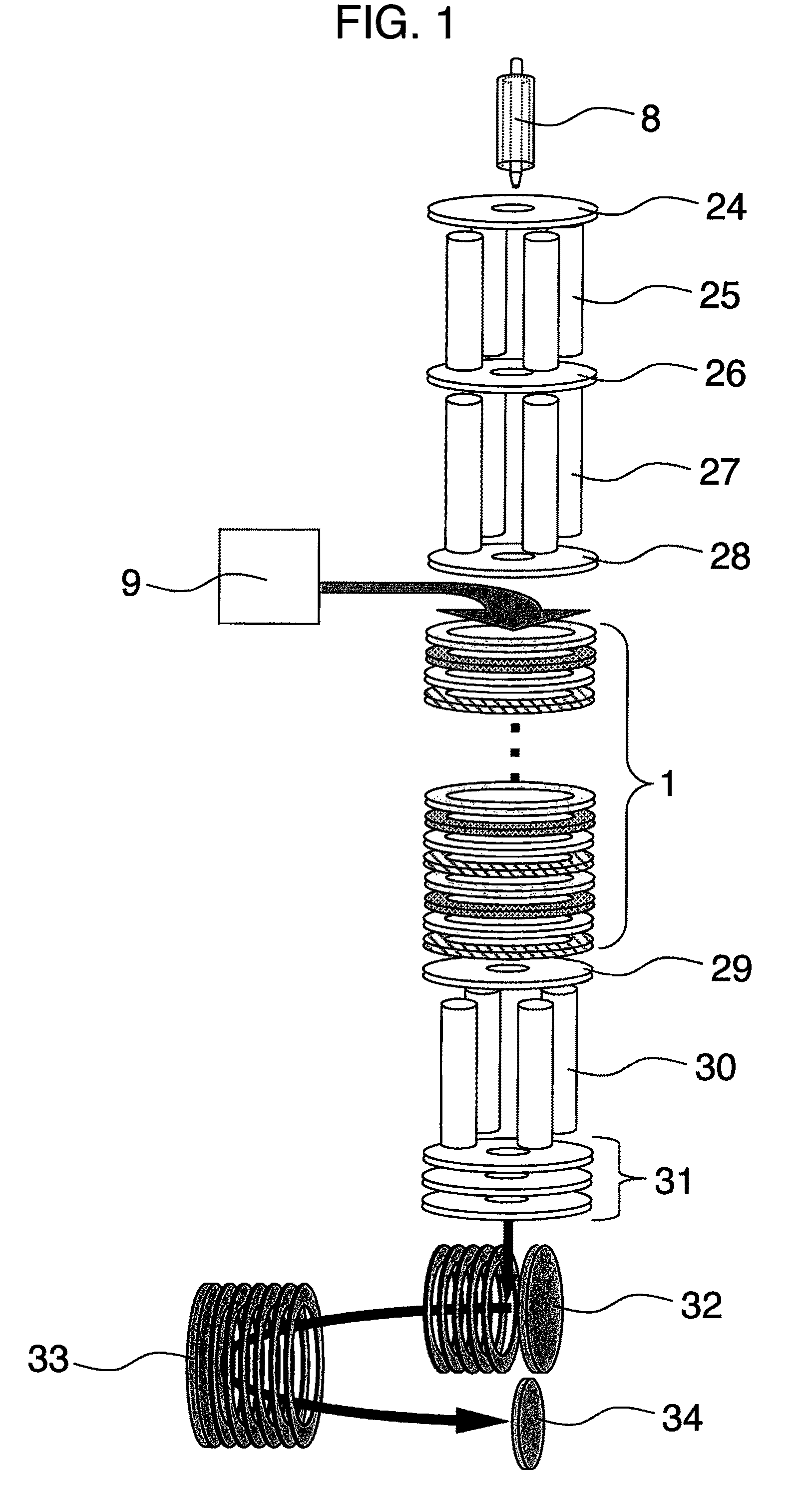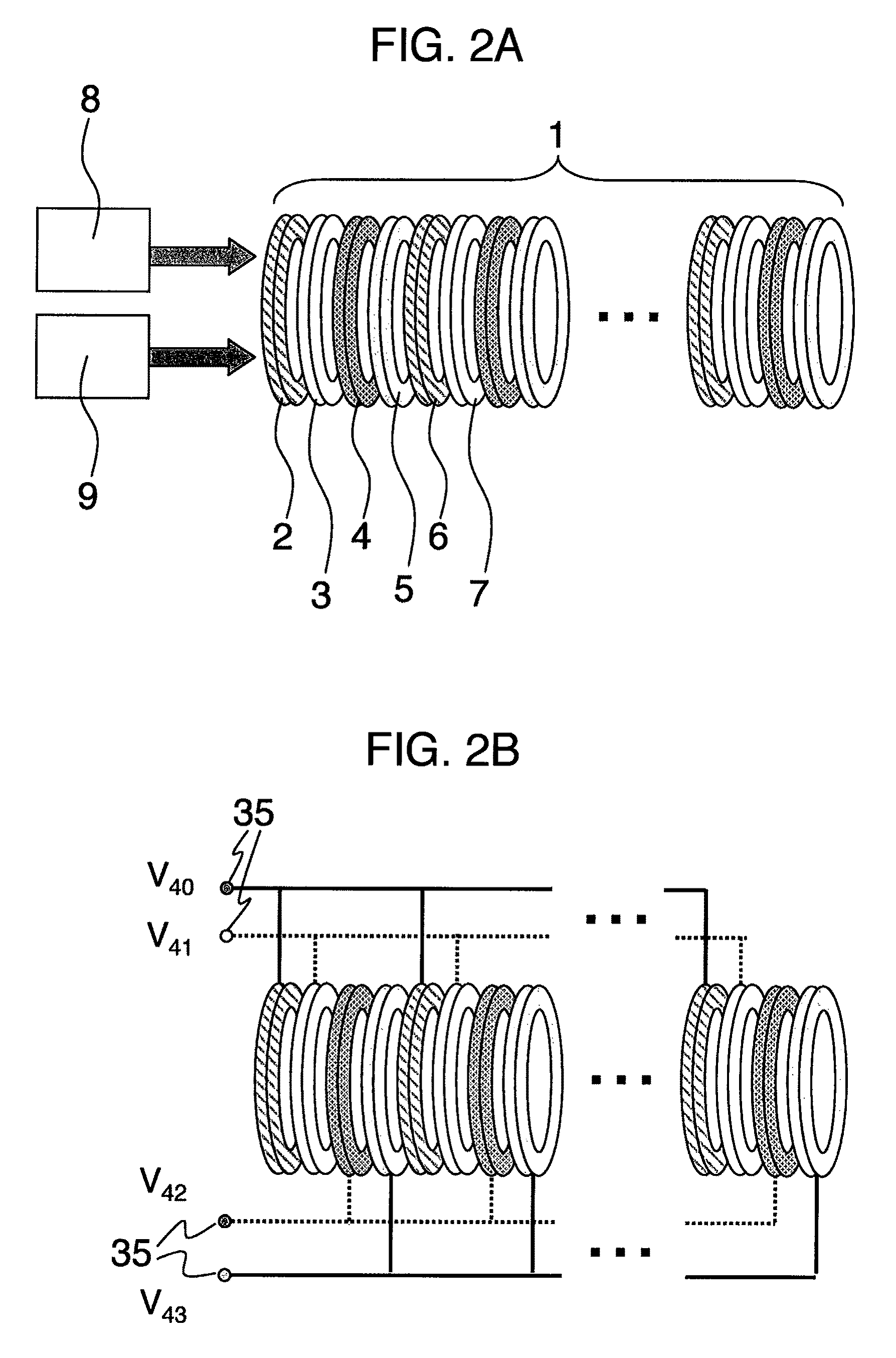Ion guide device, ion reactor, and mass analyzer
a technology of mass analyzer and guide device, which is applied in the direction of mass spectrometer, stability-of-path spectrometer, separation process, etc., can solve the problems of affecting the speed of analysis, and affecting the efficiency of structure analysis of measurement samples, so as to reduce the speed of analysis of structure samples, the effect of reducing throughput and efficient causing the reaction during transportation
- Summary
- Abstract
- Description
- Claims
- Application Information
AI Technical Summary
Benefits of technology
Problems solved by technology
Method used
Image
Examples
embodiment 1
[0046]FIG. 1 is a schematic diagram for explaining an embodiment of a mass spectrometer provided with a unit for an electron transfer dissociation (ETD) reaction, which is a charged particle reaction of positive ions and negative ions in an ion trap. First, the overall flow of the analysis is described, followed by the detail description of the present disclosure.
[0047]For a sample of analyte, a sample separated by liquid chromatograph or the like is ionized in a positive ion source 8. The ionized sample is incident upon a quadrupole ion guide part 24 and 25 inside a vacuum device, and passes therethrough and is introduced into a linear ion trap part 26 to 28. He gas, Ar gas, or the like is introduced into the ion trap part, where the sample ion is cooled by collision with the gas. In the linear ion trap part, the accumulation, separation, and ejection of ions are performed and the ejected ions are incident to an electron transfer dissociation cell. The electron transfer dissociatio...
embodiment 2
[0063]FIG. 6 is a schematic diagram for explaining an embodiment of a mass spectrometer provided with a unit for an Electron Capture Dissociation (ECD) reaction, which is the charged particle reaction between a positive ion and an electron in an ion trap. The overall flow of the analysis is the same as the description of FIG. 1. In the electron capture dissociation reaction cell, electrons are emitted from an electron source 15 to cause an Electron Capture Dissociation (ECD) reaction while positive ions incident upon the plurality of electrodes 1 each having a circular hole opened therein are being captured.
[0064]FIG. 7 illustrates the detail of the electron capture dissociation reaction cell. In the structure comprising the plurality of electrodes 1 each having a circular hole opened therein, a method for applying a radio frequency voltage to the plurality of electrodes 1 each having a circular hole opened therein is the same as the example of FIG. 2A to FIG. 5. The cylindrical mag...
PUM
 Login to View More
Login to View More Abstract
Description
Claims
Application Information
 Login to View More
Login to View More - R&D
- Intellectual Property
- Life Sciences
- Materials
- Tech Scout
- Unparalleled Data Quality
- Higher Quality Content
- 60% Fewer Hallucinations
Browse by: Latest US Patents, China's latest patents, Technical Efficacy Thesaurus, Application Domain, Technology Topic, Popular Technical Reports.
© 2025 PatSnap. All rights reserved.Legal|Privacy policy|Modern Slavery Act Transparency Statement|Sitemap|About US| Contact US: help@patsnap.com



